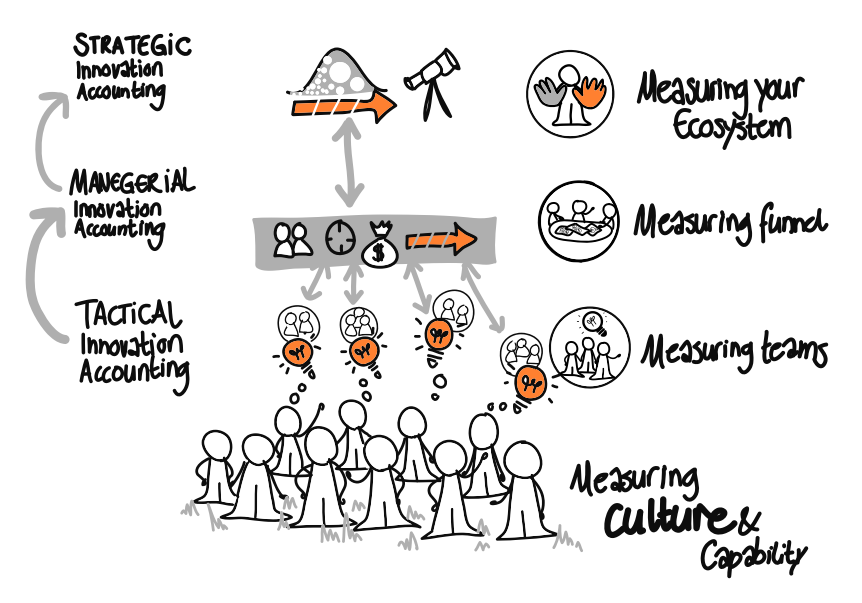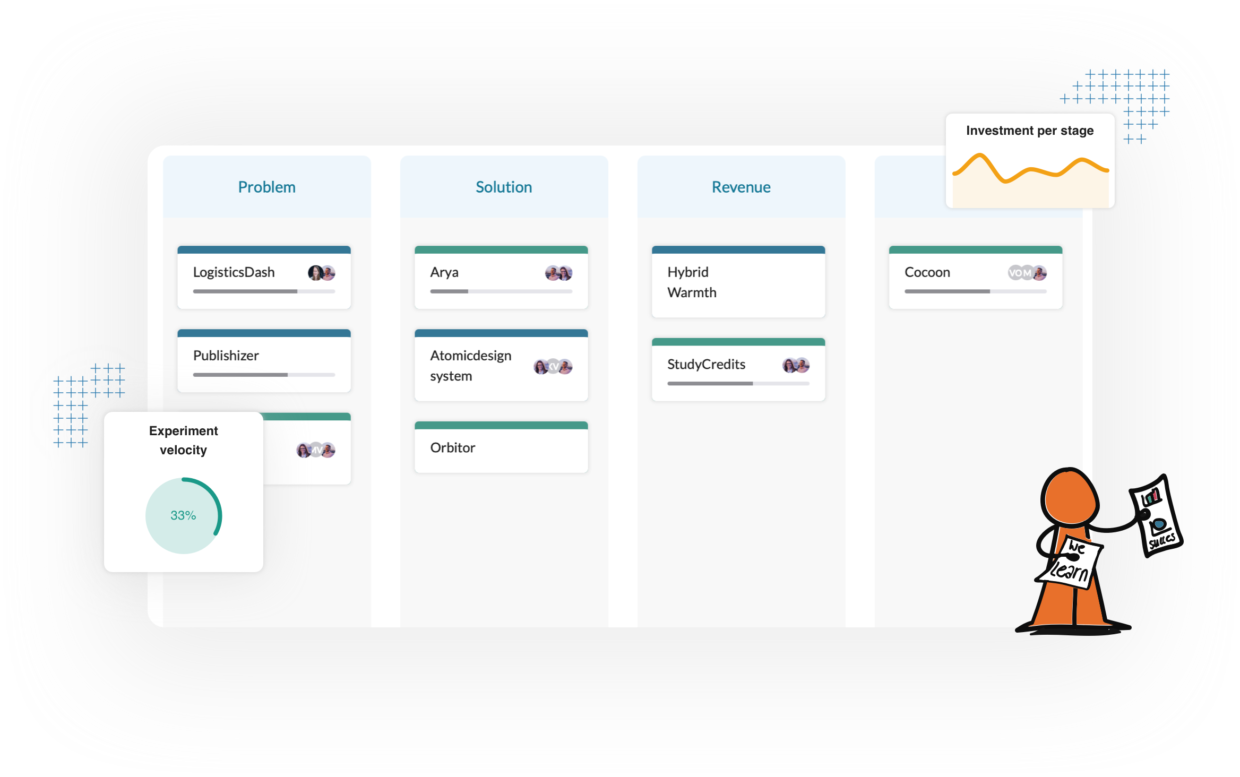Innovation reporting with an innovation accounting tool
Table of Contents
In this blog, we will discuss how to use an innovation accounting tool like GroundControl to start with evidence-based innovation reporting. To effectively use GroundControl, we first take a look at how setting up innovation accounting within an organization works. We will discuss the way of working that is necessary when implementing innovation accounting. Finally, I will explain the 3 layers of innovation accounting that can be used for innovation reporting.

Reporting innovation on a tactical level
Tristan Kromer came up with a great comparison for starting with Innovation Accounting. He said: “Starting with Innovation Accounting is like steering a boat. If you want to steer it, but no-one is rowing, there is nothing to steer.” So to start with innovation accounting, you need to start with innovation accounting on the teams level. You need your teams to start rowing, to gather the data that is the foundation of your entire innovation reporting. We call the team’s level tactical innovation accounting.
The way of working
When we talk about starting to row, we mean to start working in a structured way to de-risk the search for a working business model. Run experiments to (in)validate your assumptions and most importantly capture the learnings. We wrote a blog about how GroundControl helps you structure your way of working while testing business models.
On the tactical innovation accounting level, we recognize two types of KPIs. The first type of KPIs is individually based on every business model. Every team needs these to know in what direction they need to move. These are different for every team because the expression of value is different for every business model. The tactical innovation accounting level is the first layer of the innovation accounting system.
Innovation reporting on a managerial level
The second layer of the innovation accounting system is the managerial level. The KPIs on this level are mostly of value to stakeholders and managers. There is one metric in particular that has to be looked at when managing multiple ventures and that is the speed of learning. Learning is what teams should be focused on, as this is what will determine the progress a team is making. This is why we see the learning velocity as one of the most important KPIs when reporting on the innovation progress.
Of course, there are more variables you need to take into account if the teams have the needed capabilities; if they are educated enough; if the culture is right, and many more. But those are variables you are only going to improve, once your teams began de-risking the search for a working business model.
When you start measuring learnings, you need to look at what influences the learning velocity. Ask yourself if you can measure that as well. For example, the learning velocity is dependant on the number of experiments a team is doing. At the same time, teams mustn’t be just doing experiments for the sake of it. They must experiment with the purpose of actually learning something. You want to keep all of these elements that influence your learning velocity into account, to ensure that the KPIs are representative of the actual progress a team is making.
Innovation accounting tools like GroundControl, help you with translating the team’s work into these KPIs like the learning velocity. When you’re managing multiple startups or ventures, you can start comparing these KPIs with each other. This provides you with actual evidence that you can use to start properly reporting on innovation. Besides Learning Velocity, there are many more metrics that can be measured with GroundControl such as Experiment Velocity, Team knowledgeability, Cost per learning, Time per stage, and more.
[convertkit form=2588626]
Reporting innovation on a strategic level
The third and final level of indicators is for strategic purposes. These are indicators that report if the execution of innovation is still connected to the organization’s strategy and vision. These indicators are used to report to the board. An example of an indicator could be, the number of startups that moved to the next stage (explanation of the stages).
Sometimes we see that all the startups or ventures in an innovation program are continuously moving to the next stage, this is a common pitfall. In a high-risk environment, like the startup environment, you want to make quick decisions about which teams should continue and which should stop. When 100% of the startups/ventures are continuing to the next stage, something is wrong. This could be in the decision-making process, or the teams are not learning correctly. When it is the other way around, and none of the startups/ventures are moving on, something is going wrong as well.
Our Innovation Accounting tool has a feature that generates one-page pitchers that displays the progress of your innovation program in a PowerPoint format, to make innovation reporting as easy as possible.
This blog is inspired on a webinar that Esther has given around innovation accounting. You can watch the webinar here.

Seim is Growth Hacker at GroundControl. After studying digital marketing he decided that helping new businesses grow gives him the most energy and satisfaction.
